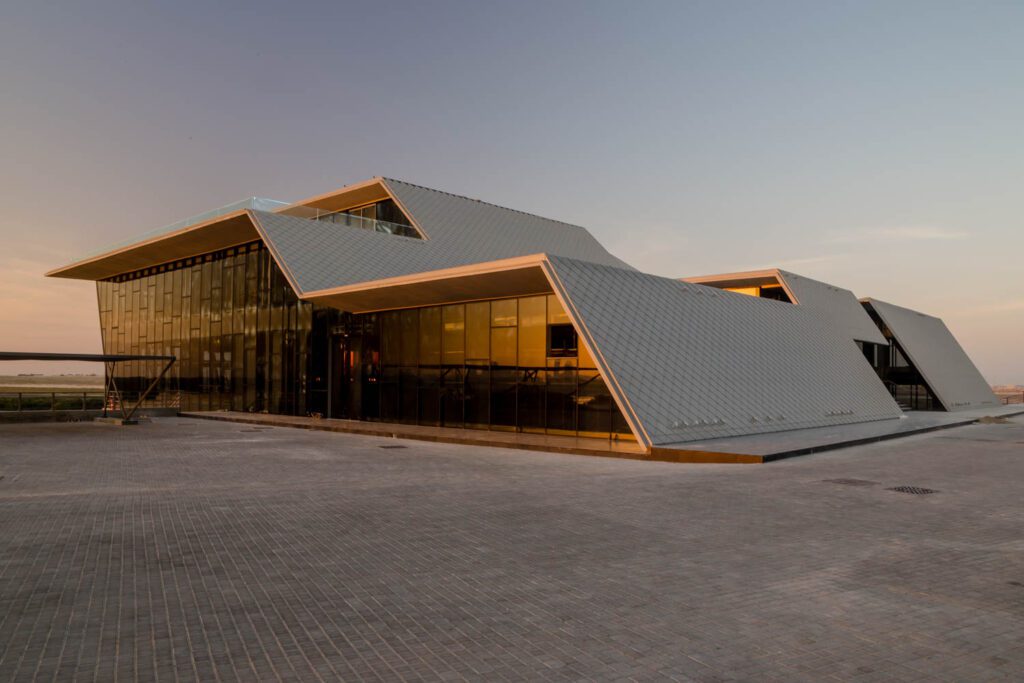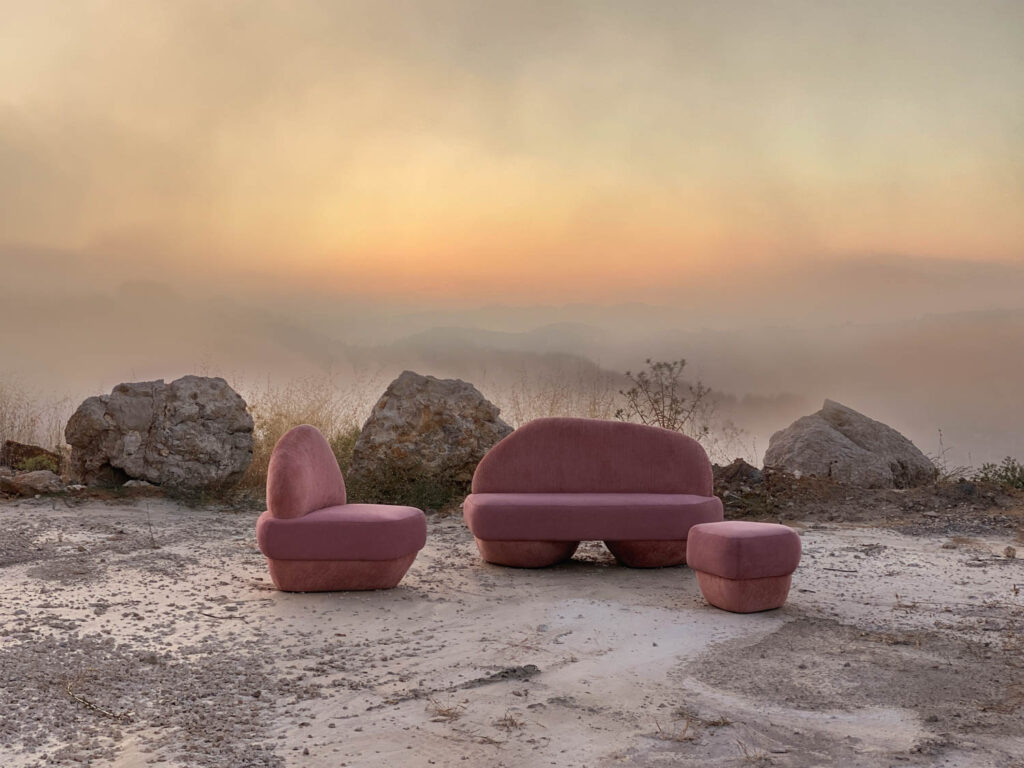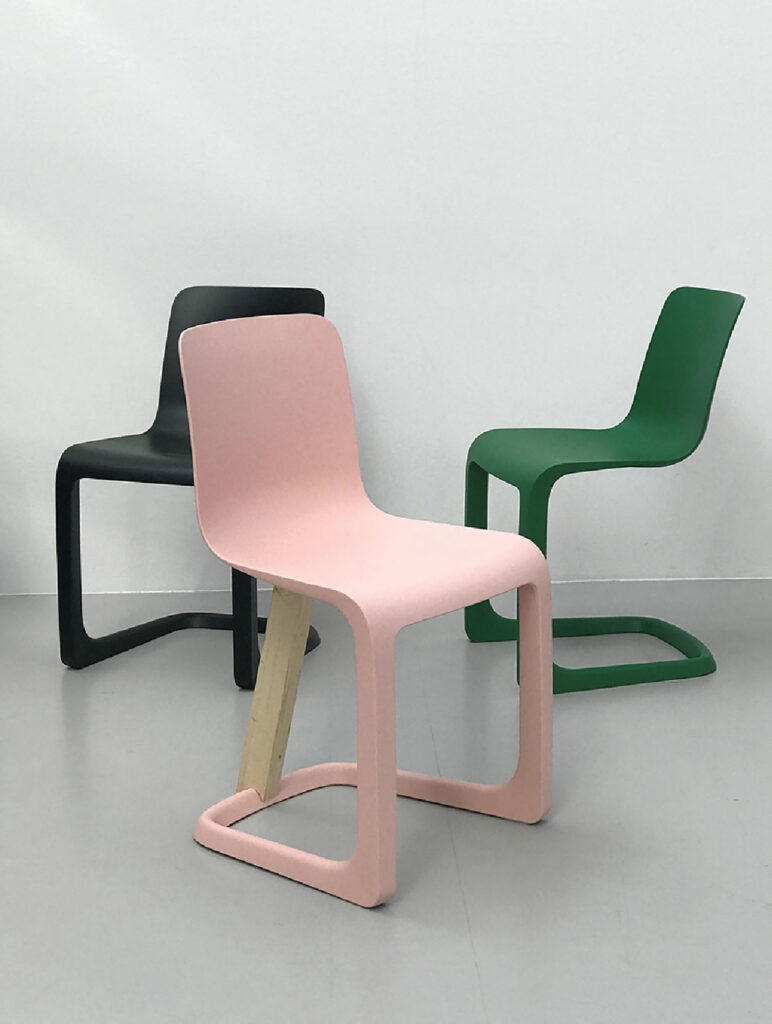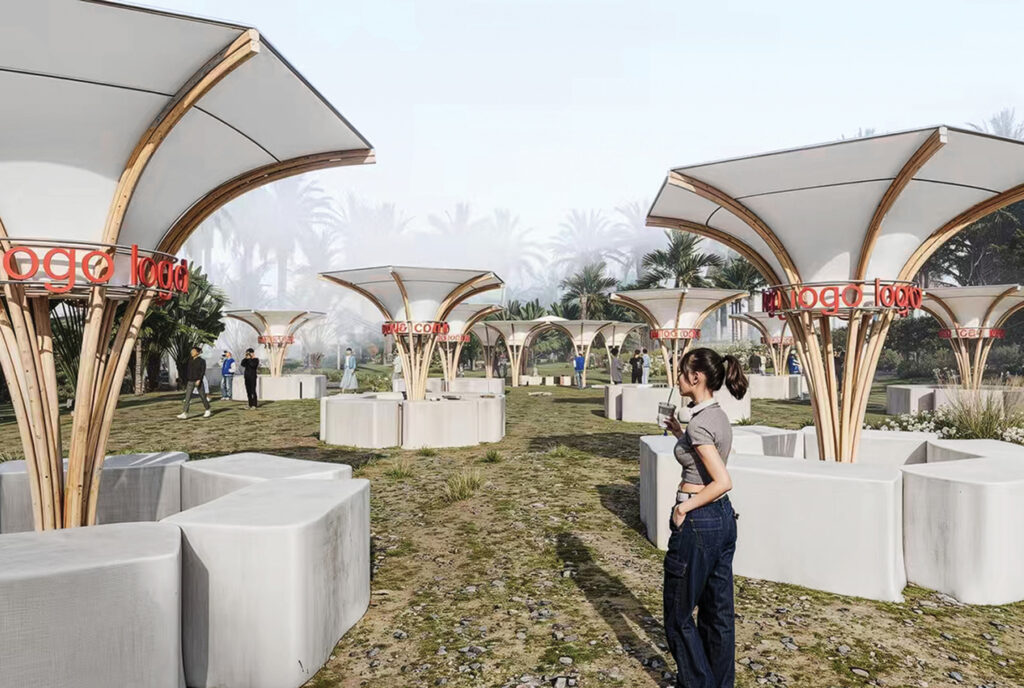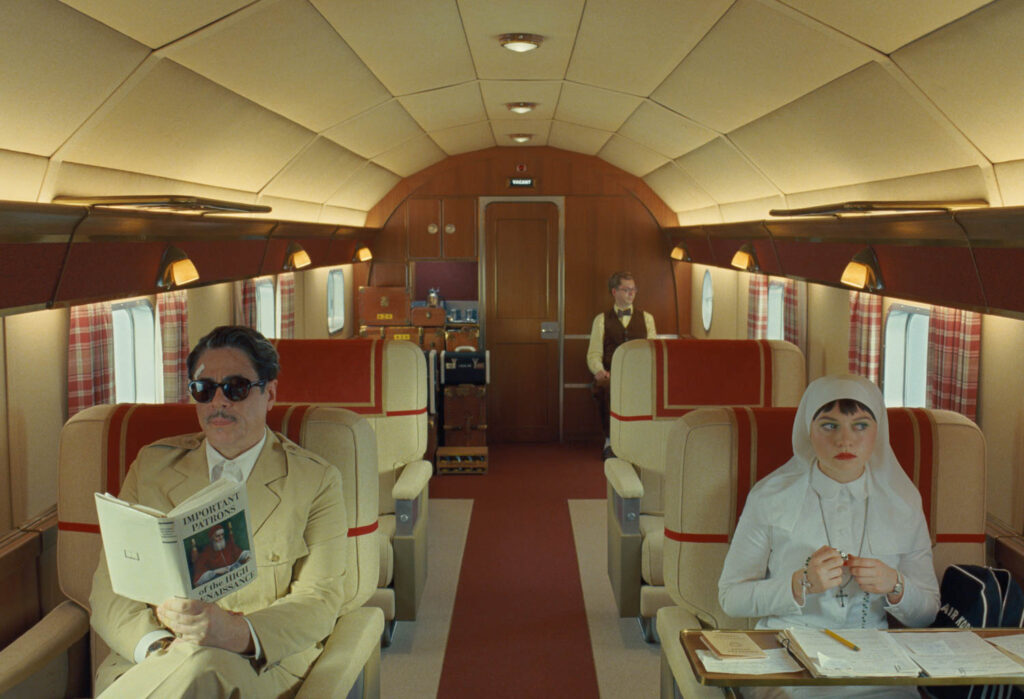
10 Questions With… Nadine Roufael
Until recently, Beirut-based creator Nadine Roufael was firmly grounded in the world of architecture and interiors, working closely with her husband and business partner of many years, fellow architect Jihad Khairallah. Now, against the backdrop of uncertain times for her home country of Lebanon, she has found solace in a new outlet, exploring fresh forms of creativity through ceramics and her personal design studio—Atelier Nadeen. From her debut exhibition “Melontown Rd” at Dubai Design Week two years ago to her latest at MENART Fair in Brussels earlier this month, Roufael’s works embrace a bold combination of colors and tactile shapes that almost appear to take on a life of their own, imbuing them with a playful sense of movement that inspires both happiness and curiosity.
Here, Roufael talks to Interior Design about this new phase of her journey, the joys of discovery and embracing personal challenge, and her plans for the future as she continues exploring her newfound medium.
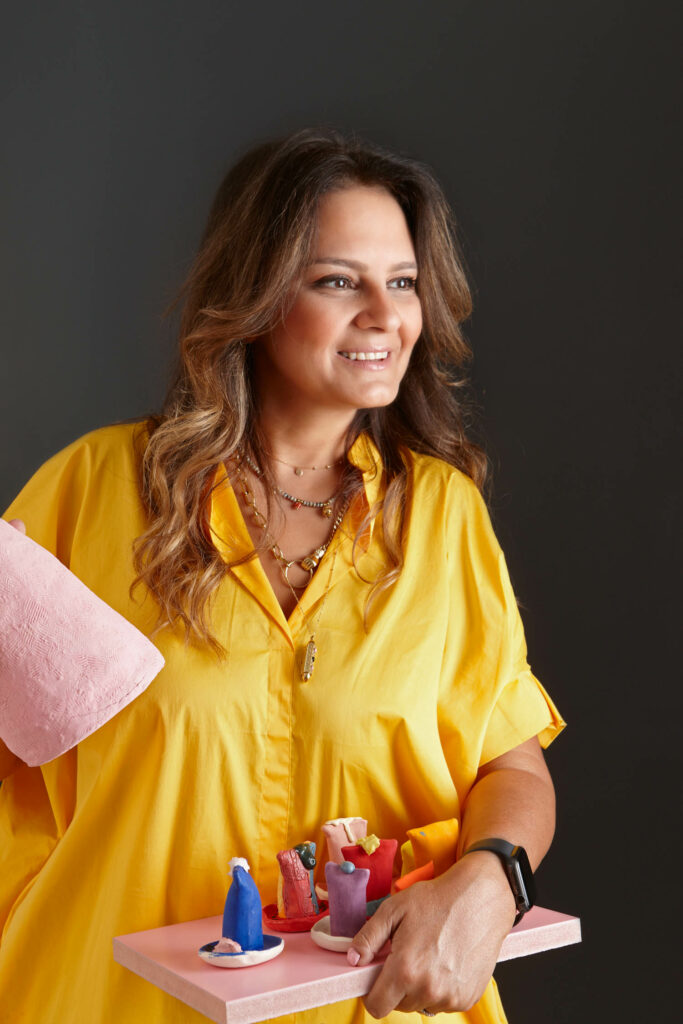
An Interview with Lebanese Designer Nadine Roufael
Interior Design: Nadine, where does your story begin?
Nadine Roufael: I studied at Lebanese University as an interior architect, working in furniture. I actually did my placement at my husband’s office. Okay, it wasn’t like that right at the beginning. At first, he was my boss, but after two years—when I was presenting my diploma thesis—we were engaged. He’s been my support and everything in my life.
We opened a furniture showroom together. He has his office for interior architecture, and I worked with many high-end Italian brands, for many years. I did a lot of exhibitions like Milan and other worldwide fairs. And I’m still working, but I closed the showroom because it took all my time. I still have my clients, but now we work from our office on a catalogue because this way it’s less expensive for them. When I closed my showroom, I had more time for myself.
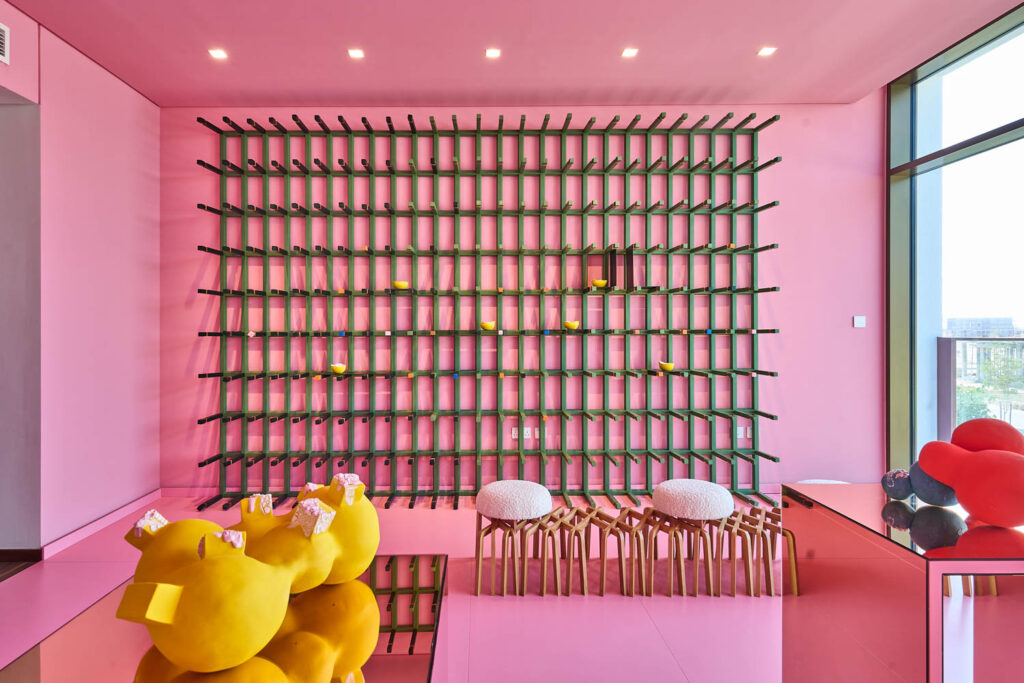
ID: Where did your interest in ceramics first come from?
NR: When I decided to work in ceramics, it started as a hobby. It was like a therapy for me. It makes me feel relaxed. I started in my house in a small room. You know, there is a lot of history tied to the use of therapeutic ceramics. I think it’s worldwide, not only in Lebanon. And it helps a lot. It’s like yoga. It’s a calm activity.
I feel that I can create a lot of experiences with sculptures, placing different materials together. I’ll spend all my day in my paradise, experimenting with colors, playing with material.
ID: Can you talk about the collection you’re showing at MENART Fair?
NR: For MENART Fair, it’s really a combination of works between my husband and myself—his furniture and my sculptures. We created a nice, colorful space. My collection reflects joy. I hate when we say that we are from Lebanon and we have to show them miserable life in our art. Sometimes, people have messages to send and they send it through their art – I can understand those who create their art to project this image of Lebanon, but I myself don’t want to send this message. That’s not me. I’m very positive. I’m always very positive. I like colors. I enjoy colors, so this is why I created a collection full of colors. I feel it gives happiness, and it’s better to send a message of beauty and happiness.
I like organic forms especially but, with each piece, I wanted to introduce a new color on it, but I’m minimalist—I wanted to keep the piece as it, with the new color coming from somewhere else. I wanted rounded shapes and something going out from the rounded shape. This is why I created extra volume on each piece and—on this extra volume—I added my new colors.
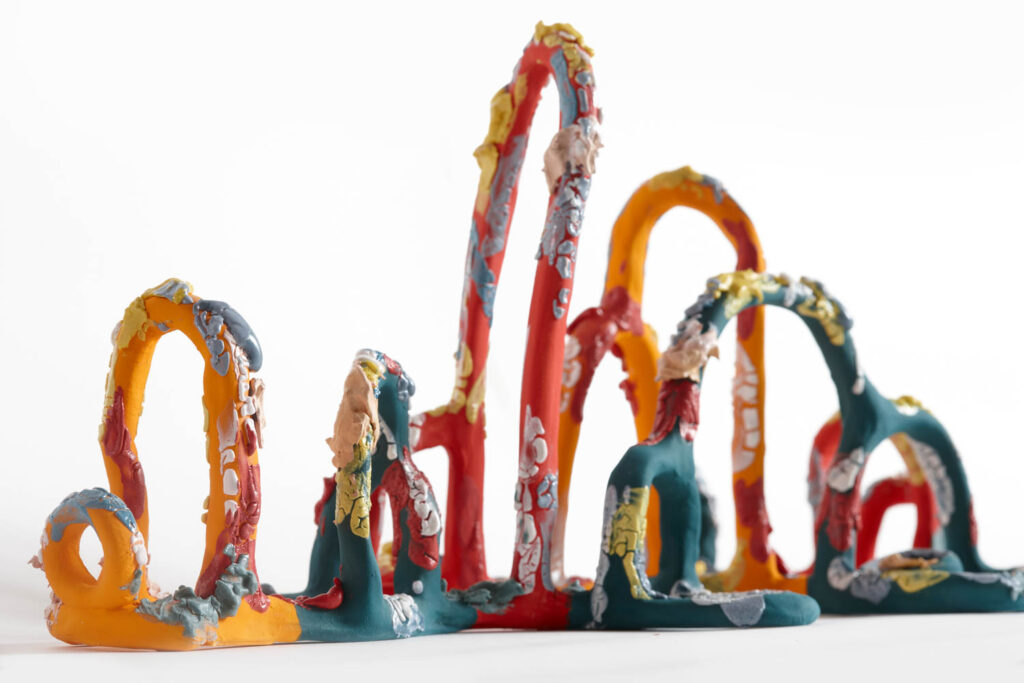
ID: You touched on avoiding ‘misery.’ Where do you find inspiration?
NR: I stopped the news in my house. I won’t look at the television. People know everything about Lebanon, and they know the situation. There’s no need for me to send those messages through my work. I keep this for my collaborations with the NGOs because it’s really depressing for me as an artist, trying to create something beautiful, so I keep myself away a little bit. Maybe it’s selfish, but this is how I want to work. This is the way I survive. I don’t want to be inspired by negative vibes, so this is why I surround myself with nature. I look around me and I see the shapes of the mountains and the trees. I do a lot of research, looking at images from nature, under the sea.
In the beginning, I put some fruits together and I based my ceramics on the fruit. I used the melon; the orange; the avocado; the mango. Even the coronavirus inspired me a lot, actually—specifically the form of the virus. When they were talking about coronavirus in the news and so on, they would show it in beautiful colors and light, rather than something ugly to see. I saw the beautiful side of the structure. This is why I try to find, in everything; this window of happiness.
ID: Is this similar to your philosophy when designing furniture?
NR: I change my mind often. I’m still discovering myself, so sometimes I like the straight lines and hard angles, and sometimes I go to rounds. I’m still not sure if I want to continue with round shapes. For now, I like to work with organic shapes, but I don’t know if maybe later on I will discover something else that I like more.
I don’t like it when they say that an artist should be always like the same thing—to have to continue on this one path. I don’t think so. I think art is found in evolution, so I need to experiment with many forms. I don’t want to stop myself by sticking to this or that design – I feel that I’m always discovering.
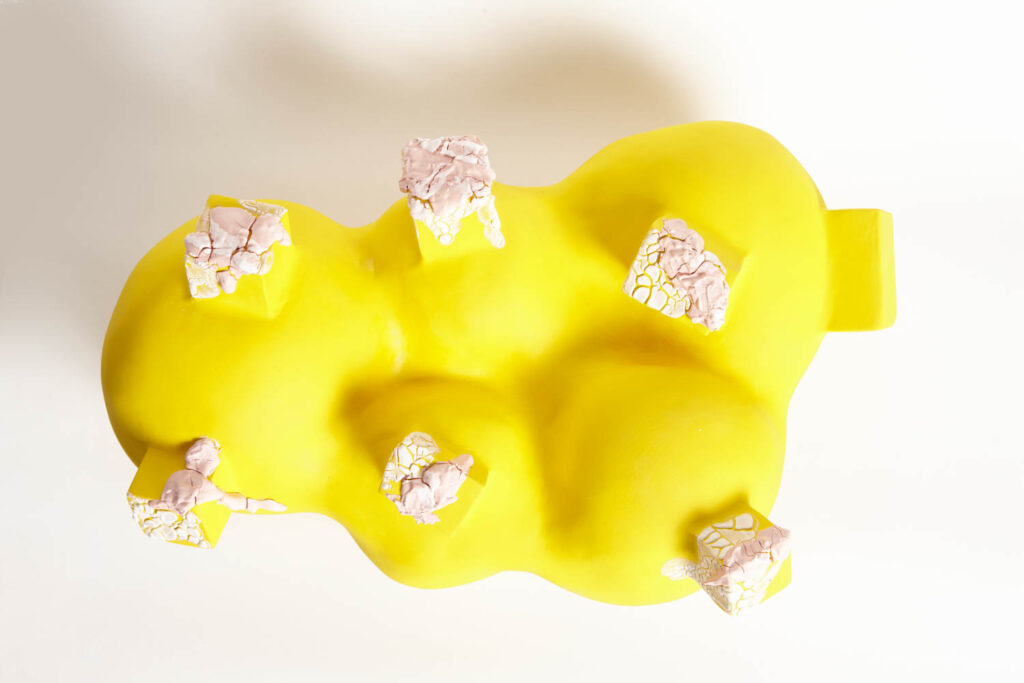
ID: You’ve mentioned your husband a few times, do you often collaborate?
NR: In my family, we are all artistic in some way. My son is a filmmaker. Sometimes I ask him for his opinion about something—or my husband. We do collaborate on furniture design, and sometimes also he gives me his opinion on colors, forms, whether he likes the structure or not.
ID: Do you work with anyone else when you are creating these pieces?
NR: I do everything by myself, independently. My work is all my own from A to Z. It’s amazing. I do a lot of experimentation with colors, playing with the material. I use many different kinds of clay. Sometimes, I imagine some forms that are really difficult to execute in reality, but I enjoy the challenge of it. I’ll keep working on the same form until I can get it to do what I want.
It’s quite funny actually. Where I live, so many people pass me by in my day and ask me about the clay and so on, so I started offering workshops for a few ladies. After this, I received a lot more requests! Many ladies want to try it and learn how they can make their own ceramics. Now, every week, I have four classes. For them, it’s therapy. Some people go to a spa. Some people like to travel. They—and I—like to work with the clay. This is a need in every person, no matter where they come from or what their situation is.
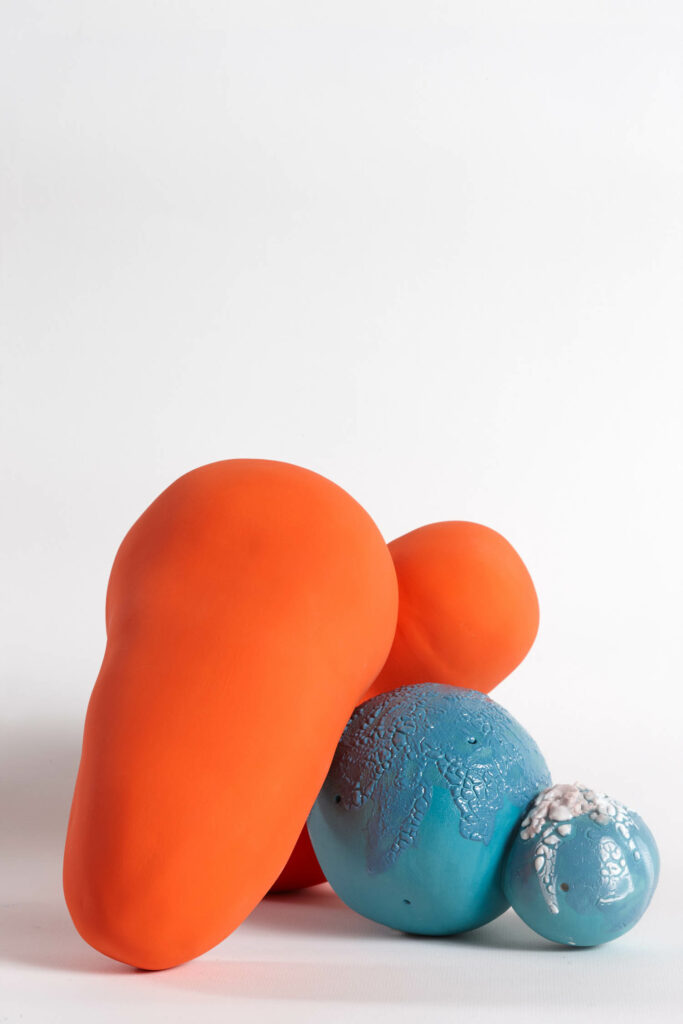

ID: How did you learn the ceramics craft then?
NR: You can find many people that love working with ceramics now, but very few who teach. I taught myself a lot of things. I did it all through online courses and a lot of workshops, both in Lebanon and outside. I am very curious. A lot of it, like the glazing technique, is just chemistry when you really break it down. It’s all very interesting.
At the same time though, you need to create your own kind of signature glazes and colours, to define your own work and to be different from the others. I’ve always thought that I’d like to leave something that my boys—when they are grown up and I leave this life—will be able to say: ‘this is a piece of art from my mum.’ This is what I focus on, all the time.
ID: Would you encourage other creatives to try new mediums?
NR: Yes! I feel that some artists start to lose their creativity because they are doing same things. When you work with art galleries, they oblige you to always create your work along the same lines, so they are just repeating themselves. I don’t want to work like that. I believe that every artist should try to do sometimes different with each collection—a new material, or new colors. They will open the door for so many new inspirations.
ID: What does the future hold for you and your sculptures?
NR: I want to gain more experience and experiment more with colors and forms. You can never stop trying new things. I started in the Middle East and now I’ve just had my first exhibition in Europe, so I would like to go further and find more exposure in Europe and also in the U.S.
My next project, I think, is to collaborate with more artists from Europe. I like the cooperation and the teamwork. It’s really valuable to have the chance to learn different ways to work from different artists. In my first exhibition, people in Dubai told me that—while they liked the pieces—I should have used more colors. In Brussels, I felt that people preferred the natural color of the materials. When you feel that people want something different, you try to change your art because, if you want to be well known worldwide, you need to try many things, but you don’t know what people will like. Some people like color, while others prefer black. You do the revolution for yourself. Sometimes, you feel that you have to create something different. Maybe, for my new collection, I will do a fusion of natural stone with something colorful.

read more
DesignWire
10 Questions With… Annabel Karim Kassar
Interior Design chats with Franco-Lebanese architect and designer Annabel Karim Kassar about her latest projects.
DesignWire
14 Product Highlights From Dubai Design Week 2022
Dubai Design Week celebrates contemporary design with a collection of creative accents and furnishings. Take a look at 14 highlights.
DesignWire
10 Questions With… Roula Salamoun
Architect and designer Roula Salamoun discusses her recent projects with Interior Design, from product launches to installations.
recent stories
DesignWire
Design Reads: A Closer Look at Jasper Morrison’s Work
Discover British designer Jasper Morrison’s wide range of furnishings, homes, and housewares in his cheeky retrospective “A Book of Things.”
DesignWire
Eco-Friendly Pavilions Take The Stage At A Chinese Music Festival
For a Chinese island music festival, Also Architects crafts reusable, modular pavilions that provided shade while resembling sound waves.
DesignWire
Meet The Production Designer For Wes Anderson’s New Film
Legendary production designer Adam Stockhausen shares how he crafted Wes Anderson’s The Phoenician Scheme’s cinematic world through spatial design.
